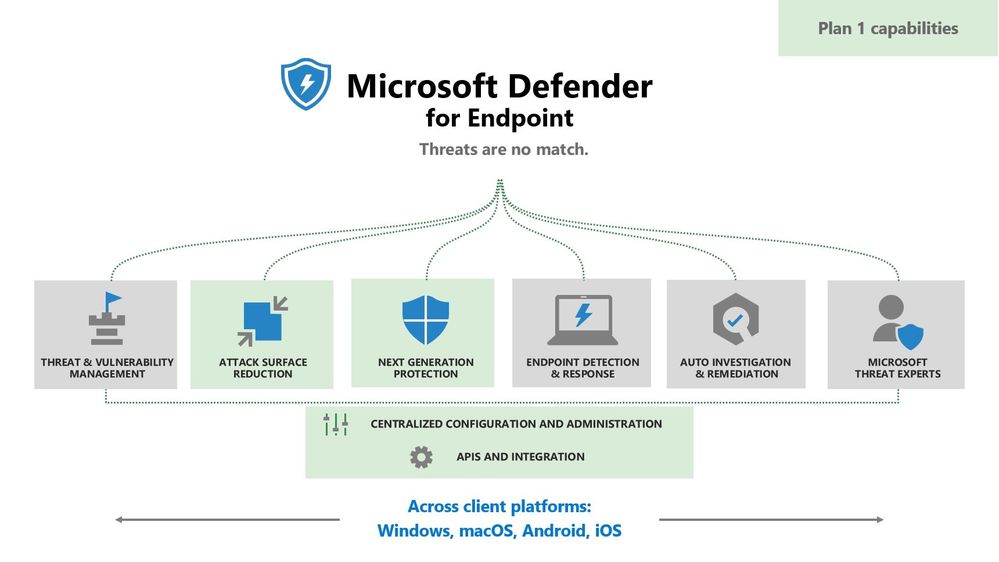In today’s digital landscape, where cyber threats loom large and data breaches can have devastating consequences, safeguarding endpoints is paramount for any organization. Microsoft Defender for Endpoint emerges as a stalwart defender, offering a comprehensive suite of tools designed to fortify systems against a myriad of cyber adversaries. In this article, we delve into the core features of Microsoft Defender for Endpoint and explore why it stands out as a formidable guardian in the realm of cybersecurity.
Understanding Microsoft Defender for Endpoint
Microsoft Defender for Endpoint is an advanced endpoint security solution that provides proactive protection, post-breach detection, automated investigation, and response capabilities. It leverages the power of artificial intelligence (AI) and machine learning (ML) to continuously monitor endpoints, identify suspicious activities, and thwart attacks before they can inflict harm.
Core Features:
1. Threat Protection: Microsoft Defender for Endpoint employs robust threat protection mechanisms to safeguard endpoints against a wide array of cyber threats, including malware, ransomware, phishing attacks, and zero-day exploits. Through real-time scanning and behavioral analysis, it can detect and neutralize emerging threats with precision.
2. Endpoint Detection and Response (EDR): EDR capabilities enable security teams to investigate and respond to security incidents swiftly. By providing detailed visibility into endpoint activities and behaviors, Defender for Endpoint allows analysts to identify the root cause of an attack, contain its spread, and remediate affected systems effectively.
3. Attack Surface Reduction: By minimizing the attack surface, Defender for Endpoint helps organizations mitigate risks and strengthen their security posture. It offers features such as application control, network protection, and device control to limit exposure to potential threats and prevent unauthorized access to sensitive resources.
4. Automated Investigation and Remediation: Leveraging AI-driven automation, Defender for Endpoint streamlines incident response workflows by automating routine tasks such as triage, investigation, and remediation. This not only accelerates response times but also alleviates the burden on security teams, allowing them to focus on more strategic initiatives.
5. Threat Intelligence Integration: Defender for Endpoint integrates seamlessly with Microsoft’s extensive threat intelligence network, leveraging insights from billions of signals to enhance threat detection and response capabilities. By harnessing the collective knowledge of the global cybersecurity community, it stays ahead of evolving threats and adapts to new attack vectors effectively.
Where Microsoft Defender for Endpoint Excels:
1. Integration with Microsoft 365 Ecosystem: As part of the Microsoft 365 suite, Defender for Endpoint seamlessly integrates with other Microsoft security solutions, such as Defender for Office 365 and Azure Sentinel. This unified approach enables organizations to consolidate their security stack, streamline operations, and achieve greater visibility and control across their digital estate.
2. Scalability and Flexibility: Whether deployed in small businesses or large enterprises, Defender for Endpoint offers scalability and flexibility to meet diverse security requirements. It can adapt to dynamic environments, accommodate remote workforces, and scale effortlessly as organizations grow, ensuring consistent protection across all endpoints.
3. Continuous Innovation: Microsoft invests heavily in research and development, continuously enhancing Defender for Endpoint with new features and capabilities to address emerging threats and evolving security challenges. This commitment to innovation ensures that organizations remain ahead of the curve and equipped to defend against the latest cyber threats effectively.
4. Ease of Management: With its intuitive interface and centralized management console, Defender for Endpoint simplifies security operations, making it easy for administrators to configure policies, monitor alerts, and track security posture across the organization. Automated updates and proactive maintenance further streamline management tasks, reducing administrative overhead.
In conclusion, Microsoft Defender for Endpoint stands out as a formidable cybersecurity solution, offering a comprehensive suite of features designed to protect endpoints from a diverse range of threats. With its advanced threat protection, EDR capabilities, automation, and seamless integration with the Microsoft 365 ecosystem, it empowers organizations to bolster their defenses, mitigate risks, and safeguard their digital assets effectively in an increasingly hostile threat landscape. As cyber threats continue to evolve, investing in robust endpoint security solutions like Microsoft Defender for Endpoint is essential to ensure the resilience and integrity of business operations.

